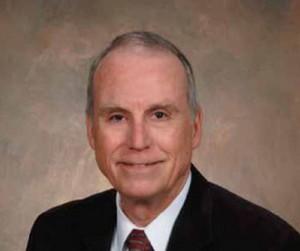Published 9 July 2014
University of Virginia engineering professor Houston Wood’s career demonstrates the important role that engineers can play in making the world a safer place. For more than two decades, Wood has helped governments determine whether nuclear programs in other parts of the world are being dedicated to peaceful or military purposes. In recent years, Wood has been working to determine the break-out time that Iran would require to develop a nuclear weapon if it stopped allowing the International Atomic Energy Agency IAEA) to inspect its nuclear facilities.

Houston Wood, University of Virginia // Source: virginia.edu
University of Virginiaengineering professor Houston Wood’s career is a testament to the essential role that engineers can play, not only in preserving a free and open society, but also in making the world a safer place.
For more than two decades, Wood has helped governments determine whether nuclear programs in other parts of the world are being dedicated to peaceful or military purposes. “I see my role as establishing a technical basis for informed decision-making and productive negotiation,” he said.
A member of the Department of Mechanical and Aerospace Engineering, Wood is a globally acknowledged expert in the use of gas centrifuges to create enriched uranium, a necessary precursor for producing a nuclear bomb. He established a Department of Centrifuge Physics at Oak Ridge National Laboratory and later worked on the U.S. Department of Energy’s gas centrifuge development program until the program was terminated in 1985. He joined the U.Va. faculty in 1981.
A U.Va. release reports that by the 1990s, with a half-dozen countries suspected of developing nuclear weapons, his expertise became important, not for building bombs, but for curbing their spread. At the end of the First Gulf War in 1991, the United Nations mandated inspection of Iraq’s nuclear program. Being able to assess both the nature and number of centrifuges Iraq had assembled was an essential element in the monitoring program, but there were few experts remaining in the United States with the requisite knowledge of centrifuges.
A call from David Albright, who was soon to found the Institute for Science and International Security (ISIS), turned out to be Wood’s entrée to the world of nuclear nonproliferation. Albright wanted to know more about centrifuges — and soon Wood was serving as a technical resource for gatherings of policymakers from different government agencies assembled under the institute’s auspices.
“These workshops are particularly useful because they are off the record and give the participants the opportunity to speak their own minds,” Wood said.
Wood also contributes technical background for reports that the institute produces and circulates to groups involved in nonproliferation.
As a result of its workshops, reports and other activities, the institute has developed a reputation as a source of authoritative information on nuclear programs in states that seek or possess nuclear weapons and as an important contributor to efforts to stop their spread. This added visibility has given Wood personal experience of the way politics intersects with decision-making.
In the run-up to the Iraq War, the Department of Energy asked Wood his opinion about whether aluminum tubes Iraq possessed could be used to produce gas centrifuges. Wood said no. Nonetheless, Gen. Colin Powell referred to these tubes during his UN speech before the war as evidence that Iraq was pursuing weapons of mass destruction.
After consulting with the Department of Energy, Wood talked to reporters at major news outlets, including the New York Times and the Washington Post, refuting Powell’s claims. “The science just didn’t support his claims, and I felt people should know,” he said.
The release notes that in recent years, Wood has been working to determine the break-out time that Iran would require to develop a nuclear weapon if it stopped allowing the International Atomic Energy Agency to inspect its nuclear facilities. “We know Iran’s capabilities from the latestIAEA report,” he said. “We can put that data into our computer models and predict how long it would take for them to develop the material for a nuclear weapon.”
Policymakers like to have at least a six-month break-out time, providing the margin they need to develop a reaction plan. Wood and colleagues at the security institute have talked to members of a number of groups, including the White House staff, the National Security Council, and the Senate Foreign Relations Committee, about their findings.
“NGOs like the Institute for Science and International Security can play a vital role in a democracy by generating useful information and providing independent evaluation of government actions,” he said. “I think there’s been a growing appreciation in our government of the need to consider outside opinions instead of relying exclusively on internal sources.”
http://www.homelandsecuritynewswire.com/
No comments:
Post a Comment